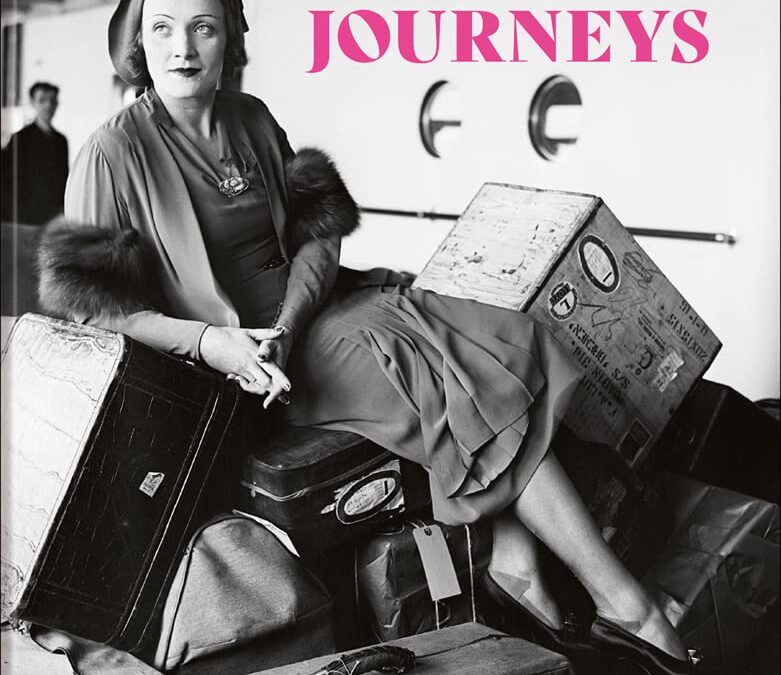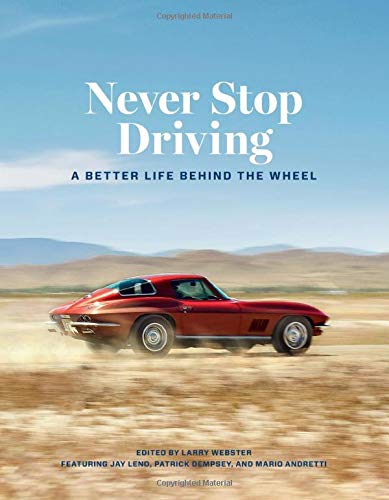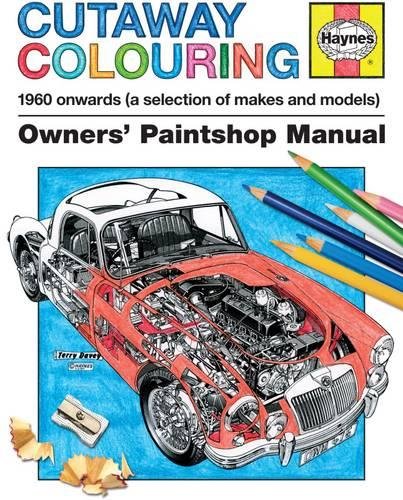
A selection of makes and models
The enthusiasm for adult ‘colouring-in’ has resulted in numerous titles being published over recent months, covering subjects such as flowers, animals and decorative patterns, with links to mindfulness and art therapies. The one area that hasn’t been targeted is the more structured and mechanical approach, which would appeal to the male market. The Haynes classic cutaways fit the bill perfectly, and the variety of cars included in the owners’ colouring manual have wide appeal across all ages. Cutaway Colouring contains over 180 cutaways, along with a brief history about the classic Haynes Manual.

There’s a common thread that connects high-performance enthusiasts; they want horsepower at the most affordable price. Hot rodders have always searched for ways to save money and improve performance, which includes fabricating their own parts, buying prime used parts, searching classifieds, and combing swap meets looking for deals. These high-performance enthusiasts take pride in beating the next guy in a contest of speed while spending a lot less to do it. Renowned engine builder and technical writer David Vizard turns his attention to extracting serious horsepower from small-block Chevy engines while doing it on a budget. Included are details of the desirable factory part numbers, easy do-it-yourself cylinder-head modifications, inexpensive but effective aftermarket parts, the best blocks, rotating assembly (cranks, rods, and pistons), camshaft selection, lubrication, induction, ignition, exhaust systems, and more.
This book is an all-new color edition of a previous best seller. It contains the latest engine-building techniques, profiles current technology, and includes today’s affordable parts and engines. Vizard performs ten engine builds, which include dyno charts and parts lists. And it’s all done at a nominal cost. Don’t throw away money on bogus parts and inflated horsepower claims. Get the real scoop with How to Build Max-Performance Chevy Small Blocks on a Budget today!
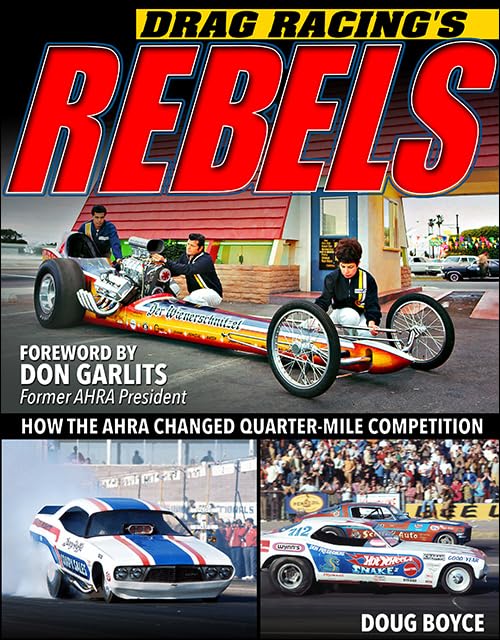
Learn the entire fascinating story of the American Hot Rod Association (AHRA) in this wonderfully illustrated color history.
When the National Hot Rod Association (NHRA) was formed in 1951 by Wally Parks, the reasoning for the formation was to “create order from chaos” by instituting safety rules and performance standards that helped legitimize the sport of drag racing. Some organization was certainly necessary. A postwar boom in automotive enthusiasm was reaching new heights, and Hot Rod magazine and the NHRA were right in the thick of it.
The NHRA hosted its first drag racing event in 1953, and in 1955, the organization staged its first national event, which was simply called “The Nationals.” The AHRA formed in 1956 as an alternative to the NHRA, where the drivers voted on the rules (rather than sanctioning bodies and tracks), and their influence on the sport was felt almost immediately.
When the NHRA denied the use of nitromethane in 1957, the AHRA approved it. When the NHRA banned aircraft-powered dragsters in 1961, the AHRA welcomed them. When the NHRA said no to the emerging Funny Car in 1965, the AHRA said yes. When fans and racers screamed for a heads-up Super Stock category in 1968, the AHRA delivered. The AHRA was called a rebel association. Some say that it was more of an association that got things done–to the delight of fans and racers. The AHRA was on equal ground with the NHRA by the 1970s, drawing enormous crowds and racer entries.
In this fascinating history, veteran author Doug Boyce tells the story of the AHRA: the rise, the competition, the events, and the eventual downfall of the organization. After AHRA President Jim Tice passed away in 1982, internal fighting for control of the association resulted in its doom. Get the whole story here, and add this wonderful volume to your drag racing library.
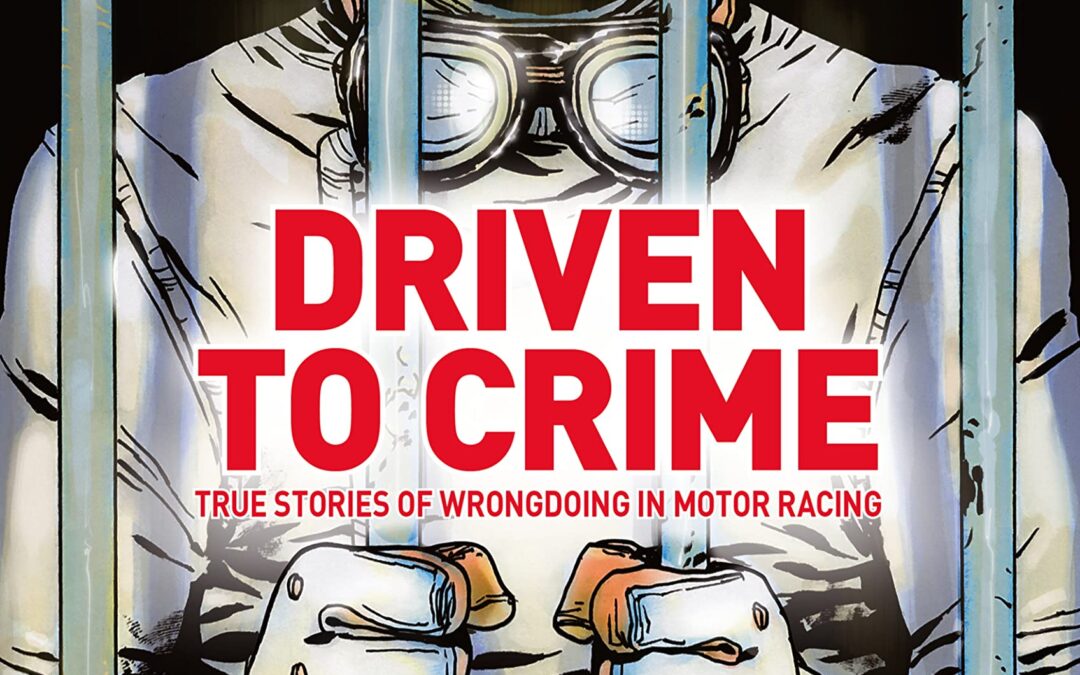
People lie, cheat, steal and even kill for a variety of reasons, one of which is to go motor racing, a particularly expensive and egotistical sport. This intriguing book, the result of years of research, encompasses not just those who have been ‘driven to crime’ in order to pay for their sport but also characters within motor racing who have been involved in wrongdoing, sometimes through no fault of their own.
Over 60 true stories cover webs of deceit and numerous crimes including drug trafficking, corruption, embezzlement, robbery, fraud, murder and money laundering. The author investigates misdemeanours at all levels, from drivers, designers and mechanics to team owners, entrants and sponsors.
- Stories of motorsport chicanery from all over the world, including…
- Fraud: Southern Organs (lay preachers who faked suicide and hid on a remote Scottish island); Jerry Dominelli (a Ponzi scheme that funded top-level racing Porsches); Jean-Pierre Van Rossem (self-styled stock-market guru who bankrolled an F1 team); Dominic Chappell (serial bankrupt racer brought down after purchasing a British department store); David Thieme (the Lotus sponsor who vanished).
- Murder: David Blakely (the driver killed by his lover Ruth Ellis); Franco Ambrosio (F1 sponsor of Shadow and Arrows); Elmer George (American racer who married into Indy ‘royalty’); Ricardo Londoño-Bridge (Colombia’s first F1 driver); Mickey Thompson (1960s American drag-racing icon); Nick Whiting (casualty of the biggest gold bullion heist in British history).
- Swindles: James Munroe (accounts manager who embezzled his way to a racing McLaren F1 GTR); Lord Brocket (jailed for staging the theft of his classic cars, including Ferraris); Andrea Harkness (stripper who ripped off NASCAR).
- Drugs: Ian Burgess (sometime British F1 racer); Randy Lanier (drug-smuggling IMSA champion); John Paul Sr and Jr (talented son dragged into a racing father’s drug-running); Vic Lee (super-successful team owner with a dodgy transporter); the Whittington brothers (more misdeeds in IMSA circles).
- Other misdemeanours: Roy James (Great Train Robbery getaway driver); Bertrand Gachot (jailed after road rage in London); Juan Manuel Fangio (kidnapped by Cuban rebels in 1958); Colin Chapman (the unresolved ‘DeLorean Affair’); ‘Spygate’ (Ferrari design secrets passed to McLaren).
This book will appeal not only to motor racing enthusiasts and cognoscenti on both sides of the Atlantic but also to anyone who enjoys reading about true crimes.
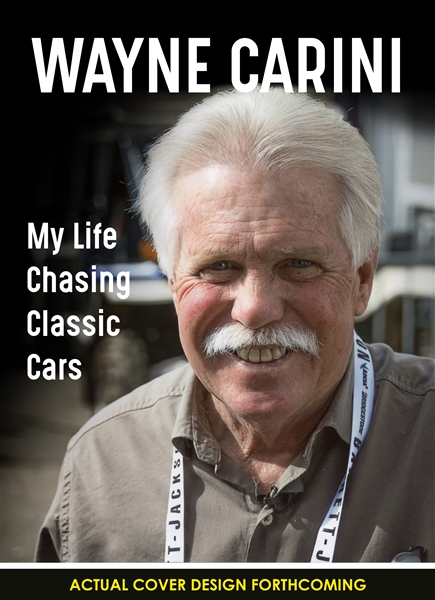
Pre-order now for early 2023 delivery
Wayne Carini is the world’s favorite classic car enthusiast and in “My Life Chasing Classic Cars”, this beloved and respected gearhead looks back at a lifetime pursuing his automotive passions. From learning about cars at his father’s side as a child through a career hunting the rarest and most desirable automobiles ever built, Wayne writes about his most cherished motoring memories. “My Life Chasing Classic Cars” puts you in the passenger seat with Wayne at the wheel talking about his favorite cars, most exciting adventures and revealing some tricks of the trade. How did the internationally acclaimed TV program “Chasing Classic Cars” get started and what are the cars that he regrets letting get away? This book answers all those questions and more. With hundreds of full-color images, entertaining stories and countless insights, this is the perfect book for car lovers of all ages.
- More than 300 full-color images
- Behind the scenes at Chasing Classic Cars
- Thoughts on collecting strategies and buying tips
- Automotive adventure tales
- Stories about some of Wayne’s favorite cars
- Hard cover with dust jacket

An intimate insight into a racing life
Mike Hailwood is a legend. Arguably the world’s greatest ever motorcycle racer, he transcended eras and generations. His two-wheeled racing career began – and he initially made his name – aboard big, British single cylinder machines, then he took to Japanese and Italian four-stroke multis, before finishing on booming V-twins and two-strokes.
He went from the black-and-white era, from one-colour dark leathers and pudding basin crash helmets, to the multicoloured, full-face helmeted, sponsorship driven days of the late 1970s. He found time to do some car racing too, recording a third at Le Mans in 1969 driving a Ford GT40, winning the 1972 Formula 2 European Championship and competing in 50 F1 Grands Prix, his debut in 1963, his last in 1974.
Though the car stats are impressive, the motorcycle ones are astonishing – nine world championships, 76 GP wins, 14 TT victories, his TT victories separated by 18 years, the first 1961, the last 1979. On top of this he was awarded the MBE and then the George Medal for his bravery in rescuing fellow F1 driver Clay Regazzoni in 1973.
It is almost impossible to comprehend the tragic irony that the life of this man, who had risked and survived so much, a hero to thousands for his derring-do, was curtailed as he drove the family car to collect a fish and chip takeaway. That his daughter Michelle died alongside him adds an extra layer to the tragedy.
Mike’s son David survived the accident and here has allowed access to the family’s treasure trove of personal artefacts. These range from the mundane to the magnificent but together they tell the incredible story of Mike the Bike.
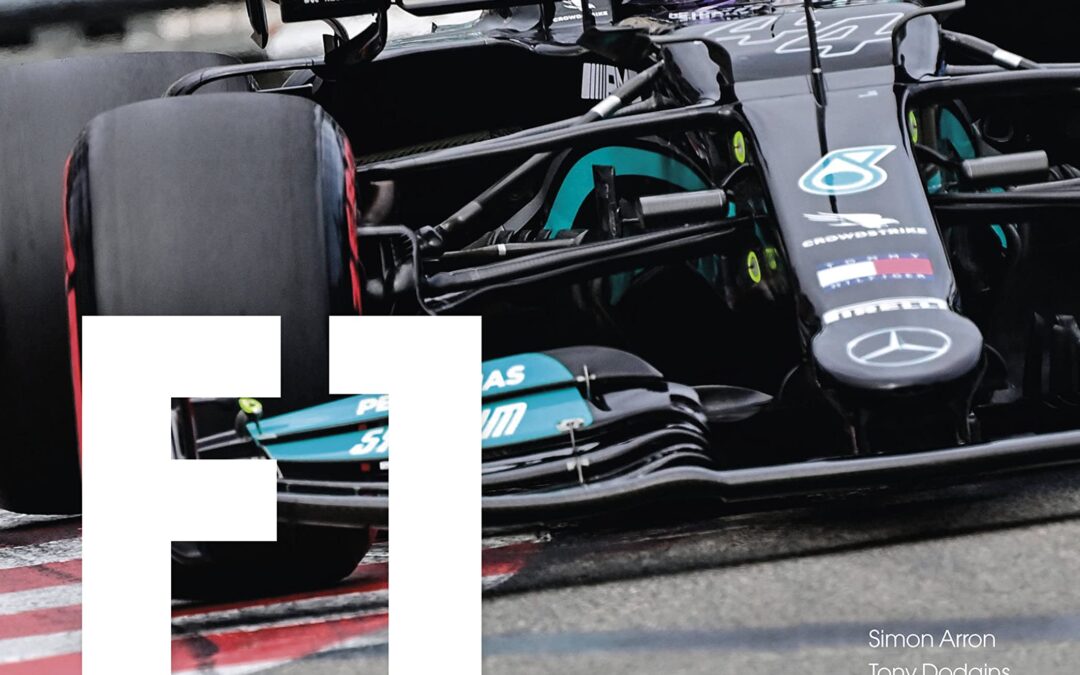
As Lewis Hamilton, Max Verstappen and Charles Leclerc battle it out head-to-head in the most hotly contested championship in years, this in-depth book, with a foreword from Haas team principal Guenther Steiner, tells the story of how the sport evolved into the exhilarating high octane spectacle it is today.
The new rules introduced in 2022 signal the greatest change to F1 in a generation, cracking the field wide open and seeing some of the most compelling and competitive races in the last 25 years.
Technical changes aimed at levelling the playing field for the teams combined with the sport’s tightening budget cap have made the races closer than ever. There will be more sprint races – trialed in 2021 – and greater fan interest driven by Netflix’s hugely successful ‘Drive to Survive’ series.
So, how did we get here? How did F1 become the acknowledged ‘Pinnacle of Motorsport’? Simon Arron and Tony Dodgins have identified the 100 most significant changes to the series since its inception in 1950. Formula One is unrecognizable from its debut season, where drivers raced around on old bomber training aerodrome in Northamptonshire with oil drums to mark the corners and straw bales the only concession to safety.
New fans will welcome a complete and highly illustrated guide to the history of F1, while older fans will be able to compare their own views of what were the pivotal moments of change, in a book written by experienced motoring writers with two lifetimes worth of knowledge of the sport.
The book will link technical progress with the personalities involved, indeed many of the swiftest changes have come about as a result of accidents or tragedies – the death of Roland Ratzenberger at Imola in 1994, the same weekend as Ayrton Senna, could have been avoided by the HANS safety device. The introduction of the halo saved Romain Grosjean’s life in Bahrain last year, but only came about because of the tragic accident that claimed Jules Bianchi in Japan.
Along with changes to circuits and the technology of the cars, this book highlights the commercial changes and the controversies that threatened to split the sport apart – such as the threat of breakaway series proposed at various times by teams.
A must-read for completists or for those new to the sport, F1: The Pinnacle is a fascinating insight into one of the most exciting and dangerous sports in the world.
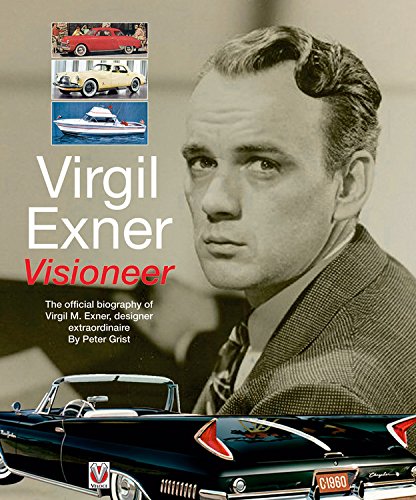
The story of a man that brought his own personal style to the world of industrial design, from automobiles to powerboats. Some 50 years after his design masterpieces wrested styling leadership away from General Motors – Harley Earl. Thirty four years after his untimely death, Virgil Exner’s name still remains inexorably linked to the Chrysler Corporation in the minds of car enthusiasts worldwide.
For an all too brief period, Exner’s name epitomised all that was great and exciting in America. His thrilling automobile designs from the mid-fifties took the world by storm and put Chrysler at the top. His work was nothing less than a revolution. Until the mid-fifties, engineers, creating cars that were reliable but invariably staid and conservative, had dominated auto design. Exner introduced to Chrysler, firstly with his ‘idea cars’ then with production models, vehicles that were wanted for their looks but at the same time, were soundly engineered; automobiles that carried classic proportions and gave the illusion of movement even whilst stationary. His design of the 1947 Studebaker established the design pattern for all modern cars and was a huge success. Along with automobile styling, his talents stretched to many other areas of industrial design, from trains to trucks and boats to Buicks.
This book gets behind the character of the man, his strengths and weaknesses, his personal tragedies and his vision of modern transport. Uncover why he set up in competition with Raymond Loewy, get the real facts behind historic inaccuracies and why he was made scapegoat for the sales disaster of the early sixties, Then delight in his fine artwork and his love of motor racing. With many previously unseen works of art and family photos among the 150 colour images throughout this is a unique and fascinating insight into a pivotal player in the development of the modern automobile.
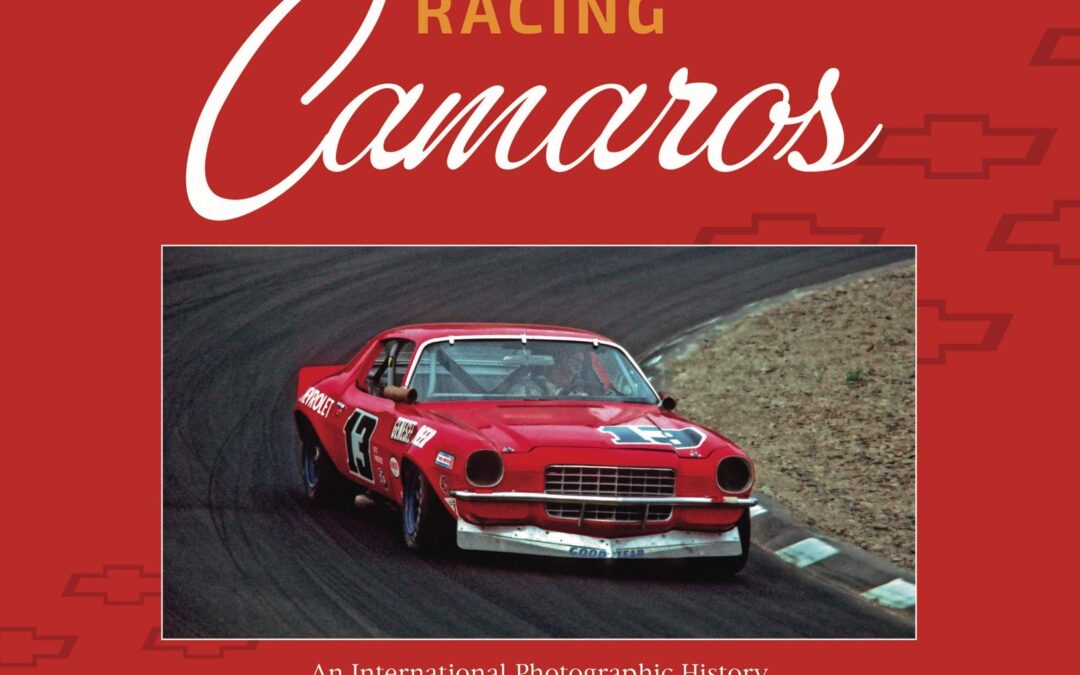
Chevrolet created the Camaro in response to the runaway sales success of the Ford Mustang, the first pony car. The Mustang went on sale in April 1964, and by August that same year, General Motors launched an intensive program to bring its own pony car to market. In September 1966, the Camaro went on sale.
Chevrolet wanted the Camaro to be better than the Mustang in every area, including style, ride-quality, and performance. To that end, with the Mustang having already achieved so much racing success, Chevrolet wanted to beat it on the track also.
Racing Camaros: An International Photographic History 1966 – 1986 is a photographic celebration of road racing Camaros throughout the world. It focuses on production-based cars, rather than the heavily modified tube-frame silhouette machines that began appearing in the late 1970s. Included are images of big-budget factory-supported cars competing in the Trans-Am series, right through to low-buck independents, and cars competing throughout the world.
For the first time, the international road racing representation of the Camaro is featured in a book, which includes countless photos that have never been published. Technical detail is provided throughout, from concept and design, right through its racing career, and the challenges and developments that took place to make it a winner. Only period images have been used. This is a true photographic history depicting the global popularity of the Chevrolet Camaro as a road racing car.
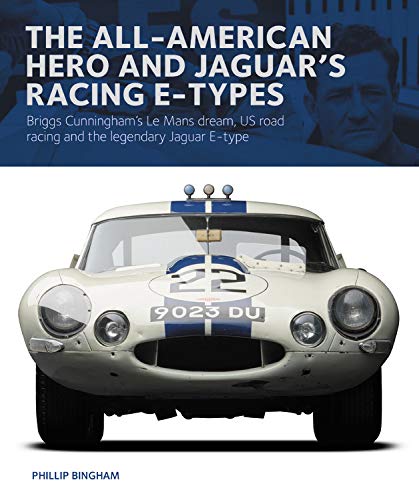
First seen by the wider world at the 1961 Geneva Motor Show, the Jaguar E-type redefined perceptions of how a sports car could – and perhaps should – look. No less a figure than Enzo Ferrari is said to have described it as “the most beautiful car in the world”. Small wonder that demand swiftly exceeded supply after Jaguar initially laid down plans to build the car in relatively small numbers.
It was an instant hit on racing circuits too: little more than a month after the launch, Graham Hill took a roadster to victory on its debut at Oulton Park. Chassis 875027, the focus of this story, was the first E-type campaigned by American racing entrepreneur Briggs Cunningham’s famous team and its performances helped persuade Jaguar to use the E-type as the basis for a competition thoroughbred that has become one of the most coveted of all time: the Lightweight
- The E-type evolved from a distinguished series of Jaguar sports cars that notched up a sequence of victories at Le Mans in the 1950s. The car’s development is covered in detail and illustrated with exquisite cutaways.
- Briggs Cunningham had an interesting tale to tell away from motorsport – as did many of his racing companions. He skippered the winning yacht in the America’s Cup; his right-hand man Alfred Momo won the Targa Florio as a co-driver, aged 14, and later climbed onto the wing of an airborne biplane to repair a leaking fuel line. Their contrasting backgrounds are covered in detail.
- Before aligning with Jaguar, Cunningham harboured hopes of putting together an all-American team capable of winning the Le Mans 24 Hours. His eponymous cars made their mark, without ever quite fulfilling his dream, and feature as part of an engaging wider story.
- In addition to running some of motorsport’s best-known names, including Bruce McLaren, Dan Gurney and Jack Brabham, Cunningham was also associated with several unsung heroes. Here, racers such as John Fitch, Phil Walters and Walt Hansgen receive the credit they deserve.
- The book is handsomely illustrated with period photographs from some of the world’s most respected collections, as well as a gallery of studio photographs showing the car as it is today.

This year marks the 50th anniversary of the British cult classic movie The Italian Job. This landmark anniversary presents a unique opportunity to celebrate the film with a coffee table book packed full of images, insights and revelations. Loaded with Sixties swagger, and famed for its endlessly quotable dialogue and one of the most impressive car chases in movie history, The Italian Job is the ultimate celebration of ‘cool Britannia’.
From the opening sequence of Rossano Brazzi gliding through the Alps in an orange Lamborghini Miura, to the high-speed getaway across the city of Turin in three Mini Coopers, The Italian Job is a petrolhead’s dream. The Self Preservation Society will detail how all these cars, including the Aston Martin DB4 and E-Type Jaguars were found and ultimately where they are today.
Over the last 20 years, author Matthew Field he has interviewed all the key people involved in the 1969 production. Through him, their stories are revealed, often for the first time. Based on more than 50 in-depth interviews with the cast and crew, and lavishly illustrated with hundreds of never-before-seen photographs and production documents, this definitive book will explode some myths, include a few revelations and tell the fascinating full story of this perennially popular movie.

TV presenter and all-round car nut Ant Anstead takes the reader on a journey that mirrors the development of the motor car itself from a stuttering 20mph annoyance that scared everyone’s horses to 150mph pursuits with aerial support and sophisticated electronic tracking.
The British Police Force’s relationship with the car started by chasing after pioneer speeding motorists on bicycles. As speed restrictions eased in the early twentieth century and car ownership increased, the police embraced the car. Criminals were stealing cars to sell on or to use as getaway vehicles and the police needed to stay ahead, or at least only one step behind. The arms race for speed, which culminated in the police acquiring high-speed pursuit vehicles such as Subaru Impreza Turbos, had begun.
Since then the car has become essential to everyday life. Deep down everyone loves a police car. Countless enthusiasts collect models in different liveries and legendary police cars become part of the nation’s shared consciousness.
Ant Anstead spent the first six years of his working life as a cop. He was part of the armed response team, one of the force’s most elite units. In this fascinating new history of the British police car, Ant looks at the classic cars, from the Met’s Wolseleys to the Senator, the motorway patrol car officers loved most, via unusual and unexpected police vehicles such as the Arial Atom. It’s a must-read for car enthusiasts, social historians and anyone who loves a good car chase, Cops and Robbers is a rip-roaring celebration of the police car and the men and women who drive them.

The Illustrated Biography of the B-17s and the Men Who Flew Them
Renowned throughout the world for its strength and destructiveness, the Flying Fortress was one of the greatest fighting airplanes of all time. In this comprehensively documented biography, Edward Jablonski tells the story of the Flying Fortress Boeing B-17, America’s legendary long-range bomber. From the B-17’s near death in infancy to the emergence of its successor, the Superfortress, Flying Fortress captures the exhilarating career of the B-17 with thrilling accounts of the exploits of these planes and their pilots. In this unforgettable history, Jablonski details the Fortress’s role in the strategic and tactical issues of air war, and chronicles the B-17’s roles in famous raids including Regensburg, Marienburg, Munster, Schweinfurt, Dresden, and Berlin, along with its part in great battles, such as D-Day.
Masterfully written, Flying Fortress is a classic in aviation literature with over 400 illustrations (many unpublished action photos) in addition to a section on the design of the Flying Fortress, which includes a number of detailed cutaway drawings. Approximately 60 pages from the Flying Fortress’s Piloting Manual are also featured herein. Find out why the Flying Fortress ultimately redefined the concept of war.
Edward Jablonski, life-long aviation enthusiast, served in the field of artillery during WWII and was a member of the Society of WWI Aero Historians and the American Aviation Society. Historian, biographer, and critic, Jablonski has written a number of books on aviation history and American cultural personalities.
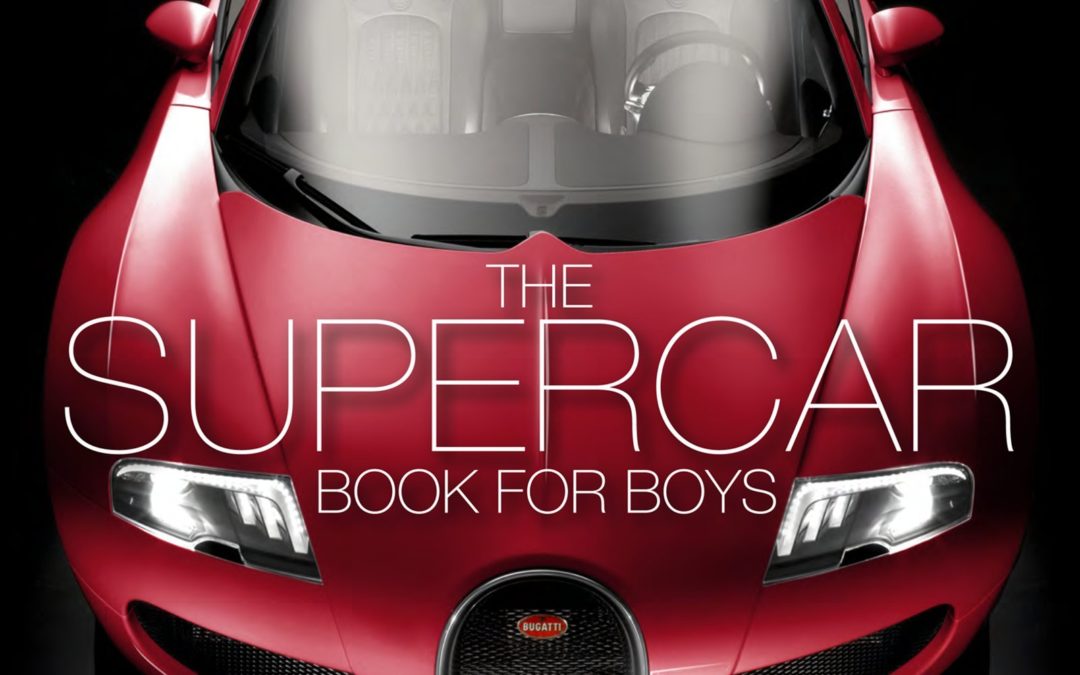
Fully illustrated throughout, The Supercar Book is a sumptuously designed guide full of everything you could ever want to know about the best supercars on the planet.
From number-one bestselling author Martin Roach, The Supercar Book is a must-have for all boys and their dads (plus petrol-head girls and mums!) interested in fast cars.
With an introduction from F1 racing legend David Coulthard, as well as contributions from the biggest names in the field, this tour de force starts with the iconic 1954 Mercedes Gullwing and races through each respective decade of supercar history, showcasing the very best and most important vehicles in this scintillating species. Featuring the landmark 10 game-changers that have defined the genre and highlighting dozens and dozens of supreme supercars from the likes of Ferrari, Lamborghini, Bugatti, Pagani, McLaren and Porsche, get ready to be blown away by the beauty and power of these incredible vehicles.
With a pre-history of the genre plus an excursion into American muscle cars, this comprehensive book takes us underneath the bonnets and peels back the bodywork of these mind-blowing machines, as well as exploring how supercar technology has affected everyday cars.
The Supercar Book is a tour de force of the fastest, the most powerful and the most drop-dead gorgeous vehicles in supercar history. Jam-packed with almost 200 full-colour photographs, awe-inspiring statistics and exclusive interviews with supercar experts, and featuring every landmark star of the genre, this book is the ultimate guide for every supercar fanatic.

Get behind the wheel, turn the key, and feel the breeze. Hit the Road features the individuality of overland vehicles, their passionate owners, and the inspiring journeys that celebrate a life on the move.
There’s a worldwide movement of people escaping the buzz of cities and diving into nature-packed camping trips and weekends away. Recharged, some head back on Sunday evening; others keep driving for months on end as they visit new countries, experience new cultures, and collect new memories. Hit the Road excites as a collection of overland adventures that put the focus on those who have decided to leave the average life behind–and not just millennials. Their rides range from the classic Volkswagen camper to cozy refurbished Airstream trailers and unstoppable fully-equipped 4×4 Adventuremobiles. The journey continues with stunning photography from the deserts of Africa to snow-tipped mountains in Mongolia. Experts share their experiences, their tips and tricks, and their favorite campfire-friendly recipes for life on four wheels. Are you ready to hit the road?
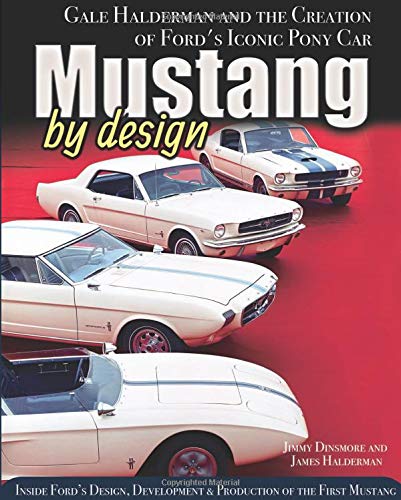
Without question, the 1964-1/2 Mustang is one of the most important and influential cars in automotive history. When Ford launched the Mustang, it created an automotive revolution. Award-winning designer and stylist Gale Halderman was at the epicenter of the action at Ford, and, in fact, his initial design sketch formed the basis of the new Mustang. He reveals his involvement in the project as well as telling the entire story of the design and development of the Mustang.
Authors and Mustang enthusiasts James Dinsmore and James Halderman go beyond the front doors at Ford into the design center, testing grounds, and Ford facilities to get the real, unvarnished story. Gale Halderman offers a unique behind-the-scenes perspective and firsthand account of the inception, design, development, and production of the original Mustang. With stinging losses from the Edsel fresh in minds at Ford, the Mustang project was an uphill battle from day one. Lee Iacocca and his assembled team had a herculean task to convince Henry Ford II to take a risk on a new concept of automobile, but with the help of Hal Sperlich’s detailed market research, the project received the green light. Henry Ford II made it clear that jobs were on the line, including Iacocca’s, if it failed.
The process of taking a car from sketch to clay model to prototype to preproduction and finally finished model is retraced in insightful detail. During the process, many fascinating experimental cars, such as the Mustang I two-seater, Mustang II prototype, Mustang Allegro, and Shorty, were built. But eventually the Mustang, based on the existing Ford Falcon, received the nod for final production. In a gala event, it was unveiled at the 1964 World’s Fair in New York. The Mustang received public accolades and critical acclaim, and soon it became a runaway hit. After the initial success, Ford designers and Gale Halderman designed and developed the first fastback Mustangs to compliment the coupes. The classic Mustang muscle cars to follow, including the GT, Mach 1, and others, are profiled as well.
The Mustang changed automotive history and ushered in the pony car era as a nimble, powerful, and elegantly styled sports coupe. But it could so easily have stumbled and wound up on the scrap pile of failed new projects. This is the remarkable and dramatic story of how the Mustang came to life, the demanding design and development process, and, ultimately, the triumph of the iconic American car.
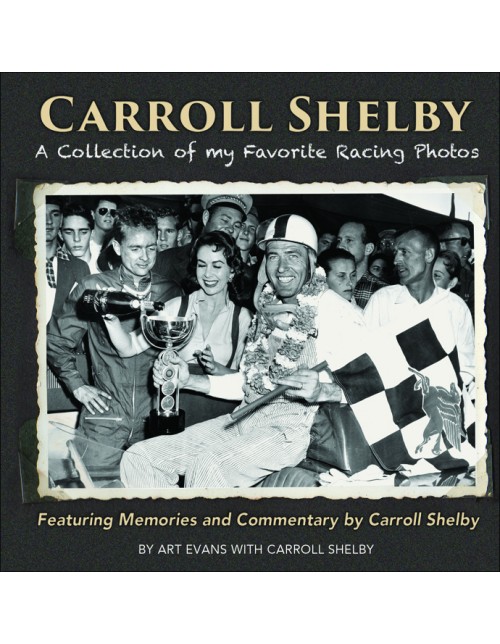
Art Evans was a sports car racer in the 1950s on the West Coast who raced against, and became close friends with, Carroll Shelby. Their intense competition on the track became a lifelong friendship off the track. He and Shelby collaborated on many business projects over the years, including books, marketing projects, projects for the Shelby Foundation, and so on. In his later years, Shelby loved the books about his cars and similar topics, but his eyesight was failing to the point where he had difficulty reading, and really preferred the books that were heavy with photos.
It was from that realization that Shelby and Evans decided to work on one last book together. They both combed through the Shelby archives and selected Shelby’s favorite images from his racing career. That is almost the entirety of this book. It is packed with photos selected by Shelby himself, and the captions are quotes from Shelby’s commentary on the action in the photo, as well as his memories.
Unfortunately, Carroll Shelby passed away before the book was fully completed, but Evans, following Shelby’s instructions, carried this final project through to completion. Filled with images that have never been seen in print, as well as images not published since the 1950s and 1960s, this final work from Shelby is a personally curated collection by the legend himself. If you are a sports car racing fan, Ford fan, Shelby fan, or any combination of the three, this book is a perfect addition to your automotive library.





